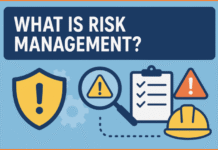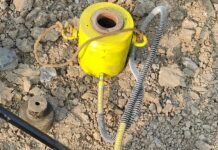Fire can occur in countless ways and environments each requiring specific methods to extinguish safely and effectively. To streamline safety practices and improve response strategies, the National Fire Protection Association (NFPA) developed a classification system outlined in NFPA 10, the standard for portable fire extinguishers. This system helps identify the type of fire hazard and guides responders to use the right extinguishing agent.
Contents
Why Is Fire Classified?
Fire classification is essential for safety, efficiency, and proper equipment use. Different materials burn in different ways and react differently to extinguishing agents. Using the wrong method or extinguisher can worsen the fire or put lives at risk. For instance, using water on an electrical fire or grease fire can result in serious injury or further spread of flames.
By categorizing fires, the NFPA ensures that:
- The correct extinguisher is used for each fire type
- Safety protocols are standardized
- Training for firefighters and personnel is more effective
- Fire risks are better understood in specific environments
NFPA Fire Classe
🔥 Class A – Solid Combustibles
Examples: Wood, paper, cloth, rubber, plastic
Nature: These fires involve ordinary combustible materials that burn with glowing embers.
Extinguishing Method: Water or dry chemical extinguishers (cooling and smothering)
🔥 Class B – Flammable Liquids and Gases
Examples: Gasoline, oil, grease, solvents, propane
Nature: Fires fueled by flammable or combustible liquids and gases
Extinguishing Method: Foam, carbon dioxide (CO₂), or dry chemical extinguishers (cutting off oxygen or interrupting chemical reaction)
⚡ Class C – Electrical Fires
Examples: Energized electrical equipment such as motors, wiring, appliances
Nature: These fires involve live electrical sources
Extinguishing Method: Non-conductive agents like CO₂ or dry chemical; never use water
Note: Once the electricity is cut off, the fire can become Class A or B depending on the materials involved.
🔩 Class D – Combustible Metals
Examples: Magnesium, titanium, sodium, lithium
Nature: Metal fires are rare but extremely dangerous and can burn at very high temperatures
Extinguishing Method: Special dry powder extinguishers designed for metal fires only
Warning: Never use water—it can cause explosive reactions with burning metals.
🍳 Class K – Cooking Oils and Fats
Examples: Vegetable oils, animal fats used in commercial kitchens
Nature: High-temperature fires typically in deep fryers and cooking appliances
Extinguishing Method: Wet chemical extinguishers, which cool and form a soapy layer to prevent re-ignition
Note: This class is especially relevant for restaurants and commercial kitchens.
Understanding NFPA fire classifications helps protect lives and property by ensuring fires are tackled with the proper methods and equipment. Whether you’re a safety officer, business owner, or homeowner, knowing these classifications and keeping appropriate extinguishers on hand is a vital step in fire preparedness.





